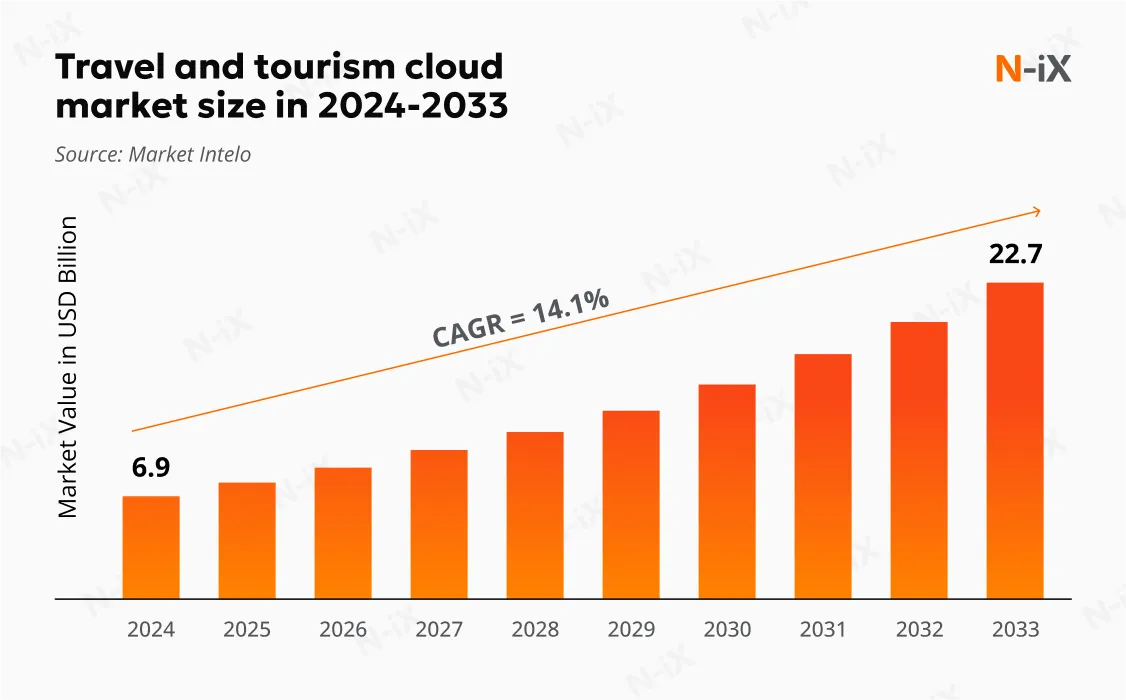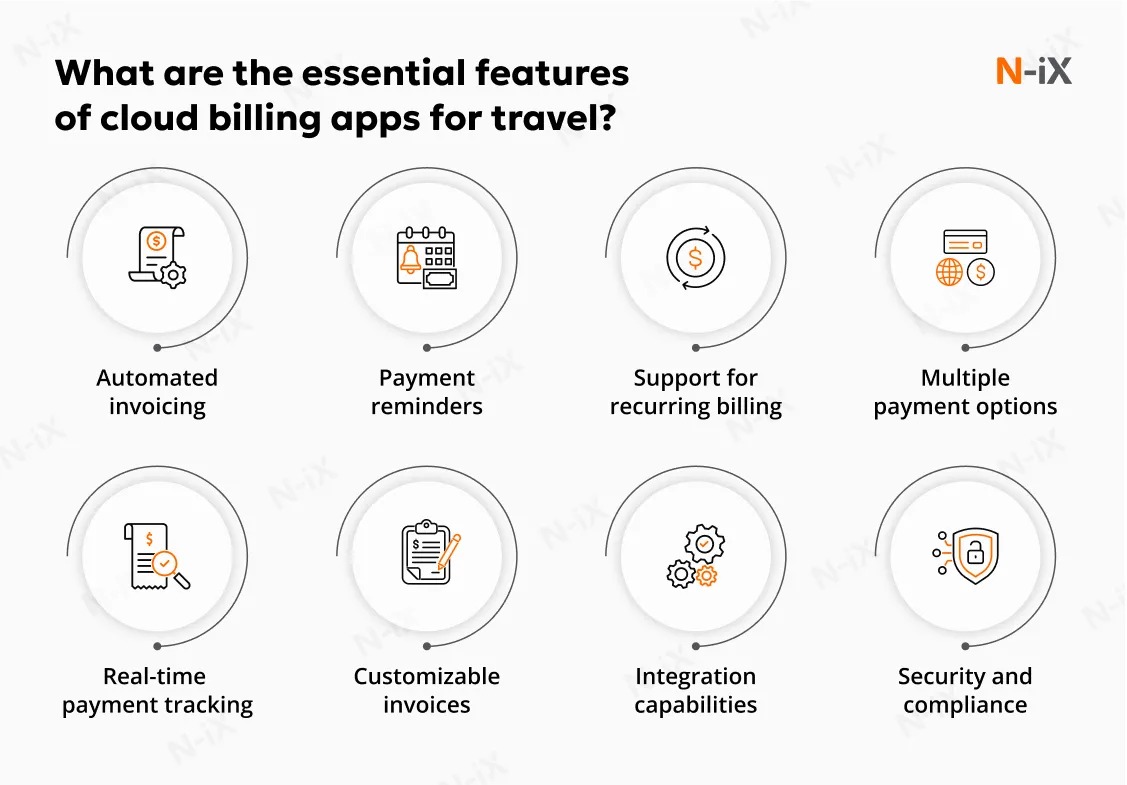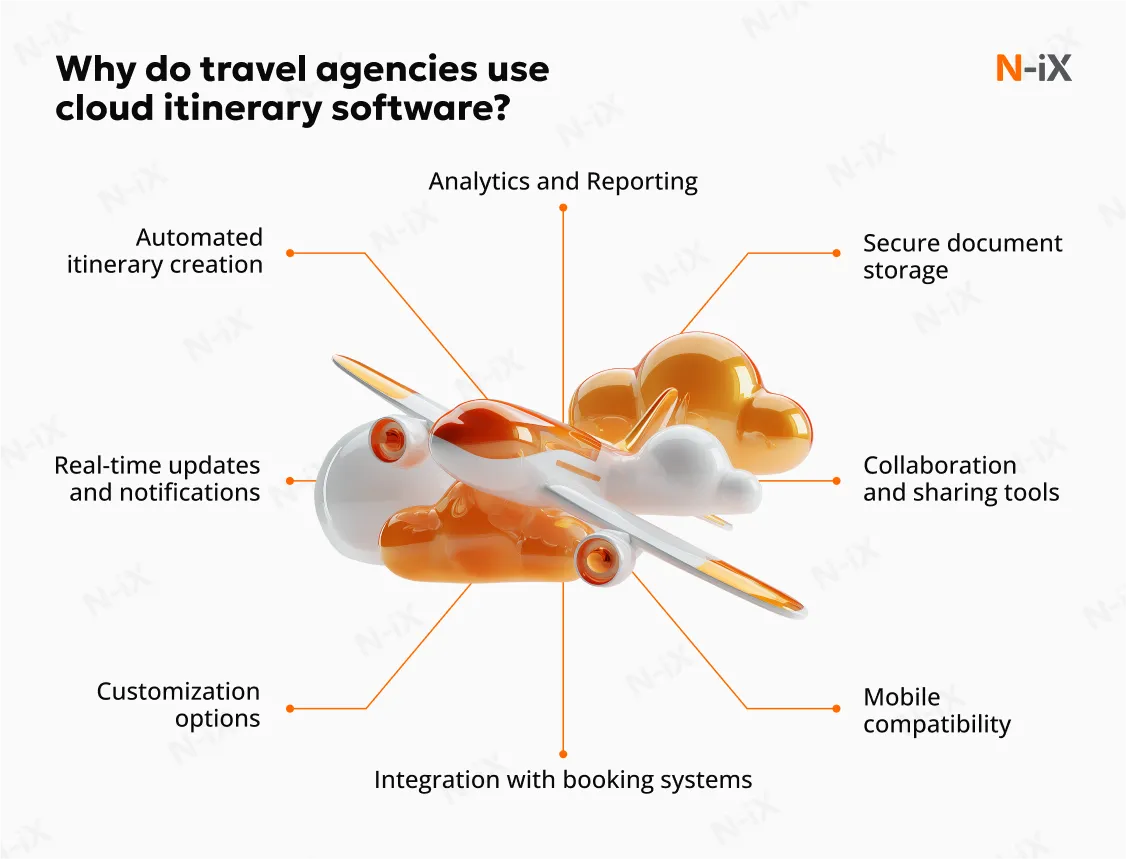Managing a travel business means coping with booking surges, fragmented systems, and rising customer expectations. Here is where the cloud comes in. By automating workflows, centralizing data, and scaling on demand, it transforms travel operations.
The momentum behind this shift is growing fast. Recent research from Market Intelo reveals the global travel and tourism cloud market will more than triple from $6.9B in 2024 to $22.7B by 2033. Clearly, the industry's interest in cloud technology is stronger than ever.

But how does it apply to real operations? Our cloud experts break down the key benefits, challenges, and common use cases of utilizing cloud computing for travel industry in this article.
Why do travel companies turn to cloud computing?
Cloud computing solutions help travel businesses tackle everyday and global challenges, streamlining operations and accelerating time-to-market. Here are the core benefits driving cloud adoption:
- Cost optimization: The cloud offers a pay-as-you-go model that eliminates significant upfront investments in hardware. This allows businesses to redirect budget to core priorities and minimize costs.
- Scalability and flexibility: Travel companies can quickly adjust computing resources to match demand spikes during peak seasons. This ensures systems handle increased traffic without interruptions.
- Operational efficiency: Automating tasks such as check-ins and reservation management streamlines workflows for hotels and agencies. Cloud-based tools enable seamless team collaboration, reduce manual efforts, and accelerate responses to customer needs.
- Enhanced data analytics: Using cloud computing for travel industry can centralize diverse data sources to enable real-time processing, better trend prediction, and resource planning. Thus, tour operators can improve decision-making through refining offerings based on real insights.
- Improved security and compliance: Built-in features like encryption and access controls ensure that traveler data is securely transmitted between countries, supporting compliance with GDPR and PCI DSS regulations. This is vital for international operations where data privacy is paramount.
- Strengthened reliability: Cloud implementation ensures system redundancy, providing uninterrupted access to platforms, even during disruptions. Airlines and tour operators benefit from quick recoveries, maintaining service continuity and passenger confidence.
Top 7 cloud computing solutions for travel and tourism
Cloud transforms travel and tourism business operations across everyday processes and critical decision points. Let's discover the top seven practical cloud solutions that deliver higher conversion, lower costs, and stronger resilience.
1. Dynamic pricing and revenue management
Cloud computing powers dynamic pricing by centralizing data and running pricing engines on auto-scaling infrastructure. Travel businesses ingest demand signals and competitor rates through cloud streaming services, then use containerized or serverless services to recalculate prices in real time and push updates through APIs to booking systems. Multi-region deployment, caching, and resilient storage ensure low latency and global consistency, while integration with central reservation systems (CRS) keeps inventory in sync.
2. Customer personalization and experience management
A cloud platform unifies customer data across web, mobile, and CRM, and delivers personalized offers through scalable microservices and API gateways. Event-driven workflows trigger tailored recommendations across channels, while global content delivery and auto-scaling compute handle traffic spikes. Secure identity management, encryption, and consent controls support privacy and compliance as experiences are adapted in real time.
3. Seamless booking and reservation systems
Utilizing cloud computing for travel industry allows for hosting integrated platforms that manage bookings, payments, and confirmations. Tour operators benefit from real-time inventory synchronization to prevent overbooking, while airlines can handle global reservations with instant updates. Additional features include automated confirmations, waitlist management, and integration with payment gateways for secure transactions.
4. Cloud AI and predictive maintenance
Cloud platforms streamline the adoption of advanced technologies by providing AI and IoT services, unified data pipelines, and auto-scaling compute. This enables precise, data-driven predictive maintenance. IoT gateways stream standardized sensor data from assets-aircraft, vehicles, baggage systems, elevators, and others-to the cloud. There it is centrally stored, cleaned, and enriched with maintenance records. Then, cloud MLOps trains models to predict failures, detect anomalies, and recommend service windows. Alerts trigger automated workflows to schedule service and parts, reducing downtime, improving on-time performance, and extending asset life.
Read more: AI in cloud computing: Key to scalable, intelligent business solutions
5. Content delivery and global accessibility
Cloud content delivery networks (CDNs) ensure fast, reliable distribution of media-rich content, such as high-resolution photos, virtual tours, or promotional videos, to users worldwide. Tourism boards can host interactive maps or 360-degree views of destinations with low latency, while apps deliver personalized content based on user location. This is an essential technology for successful marketing and revenue generation.
6. Payment and billing integration
Cloud computing in the travel industry facilitates secure integration with multiple payment gateways, supporting diverse currencies and methods for global transactions. Travel platforms can automate invoicing, handle refunds, ensure compliance with financial regulations, and reduce billing errors. This is crucial for e-commerce in tourism, enabling seamless, fraud-resistant payments that enhance user trust and conversion rates.

7. Itinerary management and loyalty programs
Cloud applications enable the design and real-time modification of travel itineraries, integrating elements like flights, accommodations, and activities. Tour operators can track each customer's journey and link loyalty programs that offer tailored rewards for repeat bookings. This enables end-to-end itinerary management, from planning to post-trip feedback, and enhances customer loyalty with data-driven incentives.

Overcoming cloud computing challenges in travel
Despite prominent advantages, implementing cloud computing for travel industry can pose challenges if not properly managed. To help you address them, we described the top three pitfalls with mitigation recommendations from N-iX experts:
Data security and compliance
Travel companies handle sensitive personal and payment information, making them prime cyberattack targets. When moving data to the cloud, ensuring compliance with international regulations can be complex.
What N-iX recommends:
- Implement encryption, multi-factor authentication, access controls, and other cloud security best practices.
- Conduct regular security audits to ensure ongoing compliance.
- Collect only necessary data and anonymize where possible, minimizing exposure in case of breaches.
Integration with legacy systems
Many travel agencies rely on legacy reservation systems, CRM software, or financial platforms that may not be easily integrated with cloud solutions. Poor integration can lead to operational disruptions or data silos.
What N-iX recommends:
- Conduct a thorough systems assessment before cloud migration to identify dependencies and integration points.
- Use cloud services with robust APIs and middleware solutions for seamless integration.
- Start with a phased migration to reduce risk and maintain operational continuity.
Managing costs and ROI
While cloud computing reduces upfront infrastructure costs, uncontrolled scaling can lead to unexpected expenses if not managed carefully. Organizations may struggle to calculate cloud ROI or optimize resource allocation.
What N-iX recommends:
- Implement cloud cost optimization and management tools to track usage and spending in real time.
- Optimize workloads by adjusting resources and using automation for scaling during peak periods.
- Partner with experienced cloud consultants to plan a cost-effective migration strategy aligned with business goals.
Wrap-up
In summary, using cloud computing for travel industry improves efficiency, reduces costs, and enhances customer experience. They also enable faster responses to demand fluctuations and market changes. To fully leverage these benefits, travel businesses often partner with experienced cloud vendors to streamline adoption and achieve faster results. For example, companies like N-iX offer comprehensive cloud services and help organizations at every implementation stage, reducing risk and overcoming challenges.
How can N-iX help?
N-iX is a trusted cloud computing partner with 23 years of experience in the market. Our expert team of 400+ cloud professionals has delivered over 150 successful cloud projects during the last five years. Besides, N-iX works with the three leading cloud providers and stands as an AWS Premier Tier Partner, a Google Cloud Platform Partner, and a Microsoft Solutions Partner. Contact us to leverage strong cloud and industry expertise to modernize your business today.
Have a question?
Speak to an expert




